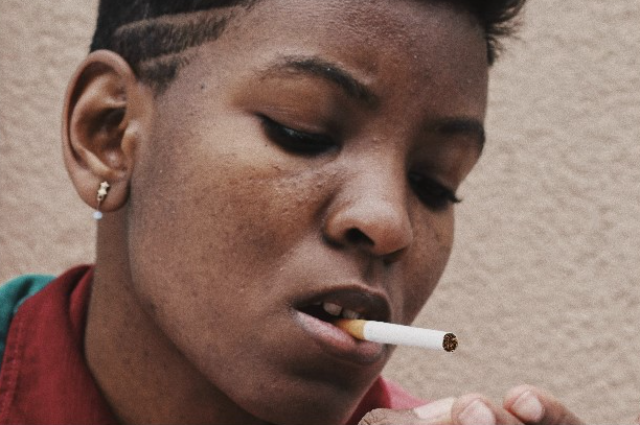Introduction:
There is a multi-hued narrative which pervades the social framework around the drug question. Many-hued because drugs and opioids are as old civilization itself and even older, the naturally occurring ones of course. Over time they have existed in many forms- Natural, semi-synthetic, and synthetic, and for a range of purposes. The question then is, can something that has existed over hundreds of thousands of years, flourished in close proximity of civilization, has influenced the minds of poets and philosophers alike, be torn from the exoskeleton of modern civilization and be thrown into a quiet corner chained in legalities and bans?
The answer does not lie in a rudimentary yes or no. It lies somewhere in between, the gulf which separates these binaries, these certainties; it lies in the grey area. The exploration of this grey area is the subject of my analysis. There has been a cacophony of multi-opined voices around the legalization of Cannabis or weed in India. There have been similar instances seen in and around the globe over the last couple of years where a lot of voices have been raised in favour of the medicative use of CBD (Cannabis-based drugs), as an alternative to synthetic painkillers. While I stand in favour of medicative use, there has been a perpetual undermining of the detrimental socio-economic impact which drugs have over society and over an addict’s brain chemistry.
This sitting on the fence attitude about the drug question is only natural because no object in itself is harmful but the manner in which it is used makes it so. Some drugs do make up for good and cheap anesthetics and can be used for recreational purposes in small doses. But is it even justified as an argument when young men by the millions have been killed over it, and countless families caught up in this mess have found themselves in social and financial mire. When you really look into the drug question, the morality, the practicality and the ethics of it, the bad far outweighs the good.
Like a coiled python slowly wringing the life out of its helpless prey or a factory chimney coughing up thick clouds of poisonous smoke into the atmosphere slowly but steadily choking the life out of thousands, the culture of drug use in a society tends to dry out the economic resources, and chews to the bone the very fundamental framework of productivity and work, leaving the society to dabble with the consequences of poverty.
A good place to start analyzing the negatives that the drug problem entails would be to look up the societies where historically (for at least 15-25 years) the issue of extensive drug use has existed and positing it against other societies which have had less instances of drug use. A comparison of these two would help establish a very commonly accepted notion that drugs, crime and poverty, exist in a symbiotic relationship with each other.

A comparative study of The US State of Texas and The African Nations of Ghana and Nigeria:
Now one thing must be clearly understood, that there is an uneven distribution of this detriment across different geo-economic areas. In other words, the drug problem does not have similar effects on the socio-economic framework everywhere across the globe. There are certain elements to it which decide the kind of effect it will have over a particular area. The element having the most sway is the economic ecosystem of the area outside of the drug market. A drug epidemic in the US State of Texas will not bear the same effects as drug abuse problems in Nigeria or Ghana. Why? Because these two are fundamentally very different economies. The US is a first-world country, while the African nations of Nigeria and Ghana are the third world. There is more stability as far as the US economy is concerned because they have enough resources to wring themselves free of this issue, on the surface at least.
That having been said, let’s take a deep dive into the said economies and analyze them carefully because the devil is in the details. The median household income of the US in 2020 was calculated to be $67,521. The median household income of Texas has risen consistently over the last decade. In 2010 the median household income was $47,266 which has risen to $68,093 in 2020. So that brings me back to my point about first-world economies being able to show sustainable financial growth over a period of time.
Texas shares a border with Mexico and has become a conduit or a passage for illicit synthetic drugs like Heroin and Methamphetamine to enter the US market. There have been, according to some reports around 4000 deaths, in Texas alone, because of drug overdose, a whopping 33% rise in death tolls, from the year before. But that does not necessarily fulfill the poverty criteria, does it? If anything, a basic deduction would be that the drug ecosystem finds a way to exist in tandem with these stable, sustainable economies. So, does that mean that drugs and poverty bear no correlation with each other? That is not true. The loss of human capital life is not something that should be treated lightly. This analysis, though not conclusively but to a good extent, proves the point about dissimilar distribution of damage across different geo-economic spaces.
Now, let’s move onto something where these complexities become a little less complex and a clearer correlation can be drawn between drugs and poverty. In The African nations of Ghana and Nigeria, we’ll attempt to analyze the financial as well as the sociological impact the drugs have on the youth of these nations. The regulation of Opioids for Ghana and Nigerian drug agencies has become a headache because something as basic as Tramadol and Codeine has been used as drugs. It’s very difficult to regulate these pharmaceutical drugs, primarily because codeine is used in cough syrups and tramadol is a painkiller. They are everyday medicines, and not some powder or crystalline substance being sold in small packets that they can be apprehended. The cost that goes into regulation, enforcement and apprehension is another major factor because of which the governments of these nations are looking to shy away from their fight against illicit drugs. So, drugs drain away from the financial resources of a country at the administrative level, in that it requires laws, maintenance and regulation, and eats up the money that could have found a better use. On the sociological front, it creates an army of brain-dead addicts who indulge in futile wars over illegal drugs. And in developing economies, like these two West African nations, it is imperative that sustainable development happens and the youth is fostered and assimilated into the idea of progress, and a major roadblock to that is substance abuse. Because nothing chokes education and creativity like illegal drugs. It has also helped spawn different militant groups (ISWA, AQIM), across West Africa which again helps add to the already existing poverty problem. The presence of militancy does not allow for infrastructural development which in turn does not allow for the creation of new job opportunities, which forces these young men to join militant groups and peddle drugs and the end result of this vicious cycle is nothing but poverty.
The question then arises, how is it any different from Texas because if one were to analyze the data one would find an increase in the average household income for Ghana and Nigeria as well. The answer lies in the difference between developing and developed.
Texas lies in an already developed economic ecosystem and simply put, it can afford the drug problem and it won’t necessarily lead to bankruptcy of the state on the whole. Whereas these two nations lie on a precariously hung rope where one wrong step and the whole economy could collapse. And the drug problem is certainly one of those issues which can catalyse this collapse.
What becomes clear with the study of these two disparate kinds of economies is that the drug problem can spawn anywhere and there isn’t a lot to link drugs and poverty except for the sociological factors where the problem seems to manifest itself in its most grotesque fashion. Also, it behaves in different ways for different economies and it won’t lead to poverty if you have enough accumulated resources, but death (loss of human capital) due to overdose is common across every kind of economy.

IMPACT ON INDIAN SOCIO-ECONOMIC SPACE:
The most commonly injected drug in India includes the likes of Buprenorphine, propoxyphene, and heroin. Alcohol, cannabis and opium, and heroin are the most abused drugs in India.
And, against the popular belief that drug and alcoholism is a problem festering only in urban spaces where there is an over surplus of wealth, it’s surprising to note that the usage is fairly evenly distributed across the urban and rural populace.
Gary Lewis, the South Asian Rural representative of the UN Office of Drugs and Crime said, “That drug abuse is an exclusively urban phenomenon is a myth.”
The rural populace again finds it difficult to cope with the brunt of being addicted to these substances and not having an exit point where they can get off this drug train. The continual use or abuse rather of Alcohol has led families into ruinous situations where sometimes the debt pile is so big that not only are the dreams and wishes of the family crushed by the weight of it but they are driven to commit suicide because of it.

A drug abuse study in 2015 commissioned by the Punjab state government in 2015 found that over two lakh people in the state suffered from drug abuse. The population of Punjab is around 2 crores. The number boils down to somewhere between 835- 840 drug users per one lakh people. The number is staggering when placed alongside the other states of India. The national average is around 250 drug abusers per 1,00,000 people and Punjab’s data is more than twice the national average. What’s even more concerning is that not only are they using drugs like ganja, opion and indulging in alcoholism, they have gone a step or two further and ventured into the domain of methamphetamine. Teenagers using crystal meth in Punjab is a nightmarish reality, that’s slowly depleting their cerebral capacity to reason, think and be rational cognitive people. It’s slowly caressing them towards the world of crime and violence from where there is no turning back.

Domestic abuse is another factor which rises with the rise in alcoholism and drug abuse across rural and urban spaces. Women are not alien to husbands coming back drunk out of their senses and beating them to near-death situations. And dark as it may sound, its something that’s just there and is never addressed, and tucked away in quite corners, blanketed with the notion that’s its mundane and part of everyday reality, and it’s just, ”men being men.” Domestic abuse involving alcoholism is also known to increase the risk of more severe injuries in women and is a common factor contributing to shattering of families and grievous mental health issues cropping up in married women.
So, is banning alcohol and the illicit use of drugs the solution to curbing poverty and domestic abuse? Well, the 2019 ban on liquor in the state of Bihar saw a decrease in the number of cases of domestic abuse. But the alcohol only shifted shape and began selling in the black market and the ban only served to push alcohol consumption underground.
Conclusion:
It's very hard for lawmakers and the law to regulate and keep a check on such issues in any county no matter the scale of resources they hold within their reserves. But passing laws protecting the rights of women, banning liquor and drugs, setting up rehabilitation centres and disseminating information regarding drug and alcohol abuse, and preventing people from spiraling further, does go a long way as far as curbing the problem is concerned.
There are multiple studies which link alcoholism and drugs to economically disadvantaged people, in that they are more likely to fall prey to alcoholism and drug abuse than those who are financially well off. And it's not very hard to understand the logic behind it. Poverty can lead someone to use drugs and on the other side, drugs can lead people to poverty. But poverty, simply put, isn't the only determining factor as far as drug abuse is concerned. It is made up of multifoliate factors, poverty being one of them but not the absolute determinant.

